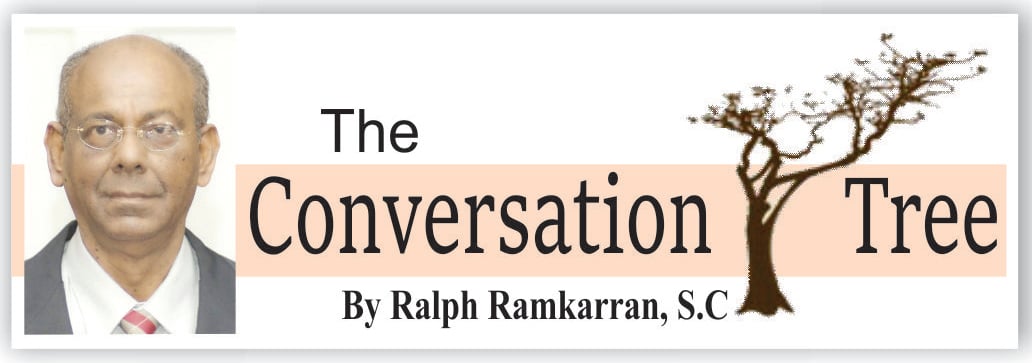Violence at elections time or immediately thereafter in Guyana, though devastatingly painful, particularly to the victims, is nothing unusual. It gave rise in the past to a memorable phrase – “slo fyah, mo fyah,” the meaning of which speaks for itself and was manifested in the arson of Berbice homes and property in the streets in recent days. Despite the absence of post-election violence for almost twenty years (since 2001), there is no doubt that the prolonged struggle since the no-confidence motion in December 2018 to conclude timely free and fair elections, palpable tensions in the society had been building.
Although some supporters of the major political parties created some disorder, there was no active encouragement to commit violent acts as in the 2001 and pre-2001 era. Another factor which may have dampened the fervor for violence was perhaps because the struggle took place mostly in the courts, thereby removing it from the streets. Though the hearings were tedious and the wait for decisions agonizing, these may have temporarily defused the dangerous tensions slowly maturing. But the popular opinion that the APNU+AFC would not win the elections and would not see office again any time soon, because of the disintegrating support for the AFC, and its losing efforts in the courts, would have caused much dejection.
As APNU+AFC was coming to terms with its loss, not merely an electoral loss but, as supporters would see it, a devastating blow to their ethnic security, the PNCR leadership imploded in a self- created crisis as party leader, David Granger, sought to resolve the eventual succession to the PNCR leadership of Joe Harmon by bureaucratically manipulative means. Omitting tried and tested leaders from Parliament, in an attempt to remove challengers to Joe Harmon, the main person being the popular Volda Lawrence, the Chair of the Party and its second most important leader, Granger took heat and generated much consternation.
Into this bubbling cauldron, which may have subsided, fell the horrific murders of teenagers Isaiah and Joel Henry in Cotton Tree, an area where many Indian Guyanese live, some of whom have coconut and rice farms at the back of the village. In our ethno-political context, the immediate conclusions were obvious, namely, these were racial murders, demonstrated by their brutality, and for that reason must have been committed by Indians. Some other condiments were added to the brew. At the stage when David Granger and Joe Harmon visited the family, relatives of Joel and Isaiah, and their supporters, some residents of West Coast Berbice had begun to place obstacles on the roadway and burn them. If violence against persons had taken place, it would have been minimal.
In inflammatory speeches, Granger described the uprising as the “correct response” and called for a “self defence” society. Harmon calling for “vigilance,” accused the police of having “known thugs” in their ranks and described the event as a struggle against the government. The dog whistles were blowing loud and clear, as Mr. Kit Nascimento thoughtfully analysed in more depth in a letter to SN last Thursday, (“Granger and Harmon must be held responsible for this unrest.”). He accused the PNC of being “determined to use these tragic deaths for political purposes.”
After David Granger and Joe Harmon left West Coast Berbice, the violence exploded. Two more persons were killed, Haresh Singh and Prettipaul Hargobin. Countless persons, almost exclusively Indian Guyanese, were brutally assaulted, robbed and some of their properties, such as goods, vehicles and homes, were destroyed by arson.
All people of goodwill have condemned the horrific murders of Joel Henry and Isaiah Henry and the retaliatory violence which followed it, encouragement for the violence being given by many on social media, some prominent. But with the deafening silence from the PNC as the violence escalated after Granger’s and Harmon’s departure from Berbice, it was left to Gladson Henry, the father of Isaiah and Ms. Volda Lawrence, to say the words that brought shame to the rioters and to the hierarchy of the PNCR.
In deep grief, Mr. Henry called for peace and declared that he is not a racist and does not want to see his Indian brothers and sisters hurt. Ms. Lawrence appealed to the better angels of our nature as Guyanese. We do not kill children, she said. The timely and resonating words of Mr. Henry and Ms. Lawrence encouraged a calm, which was strengthened by the numerous visits to the relatives by the President, Prime Minister, Minister Robeson Benn, Minister Vindhi Persaud, a delegation from the new parties and many others. After Ms. Lawrence’s widely praised and effective appeal, defining her as a resourceful, empathetic and thoughtful leader, the PNCR finally, sheepishly and belatedly called for calm.
The cumulative hatreds brought on by the regular onslaught of ethnic violence in Guyana, associated mainly with the struggle for ethnic supremacy, but manifested in other areas, such as crime, are not susceptible to amelioratory panaceas. This season of violence will pass, leaving the usual bitterness in its wake, until the next time.
This column is reproduced, with permission, from Ralph Ramkarran’s blog: www.conversationtree.gy






